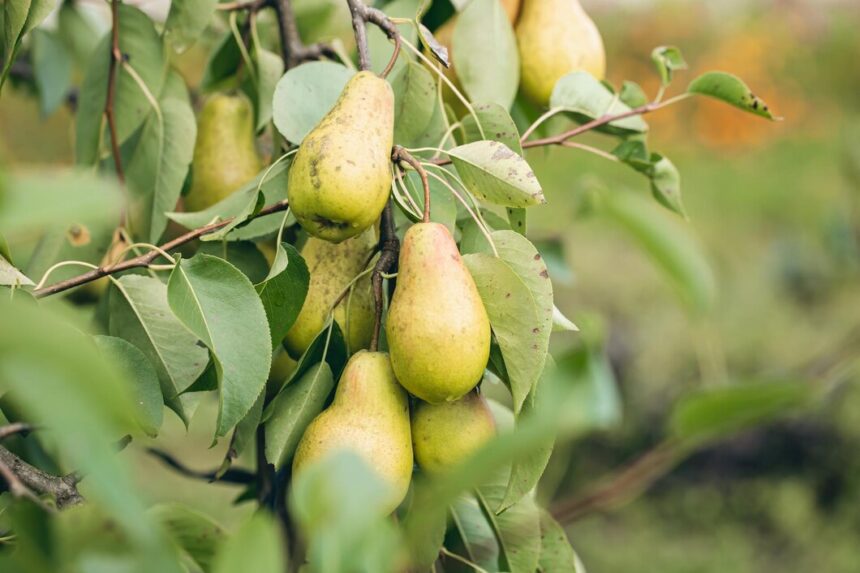Fire blight is a destructive bacterial disease that affects pear trees and can devastate orchards if not identified and managed early. Recognizing the initial symptoms is crucial for implementing prompt control measures to mitigate its spread. This article outlines ten early signs that indicate the presence of fire blight in pear trees, empowering farmers to take proactive steps in protecting their orchards.
1. Water-soaked Blossoms
- Description: Infected blossoms appear water-soaked and eventually turn brown or black.
- Identification: Early in the season, inspect blossoms for discoloration and wilting, which are indicative of fire blight infection.
2. Shoot Blight
- Description: New shoots and branches suddenly wilt and turn black or brown, resembling a scorched appearance.
- Identification: Look for blackened, curled leaves and shriveled shoots, especially during warm, humid weather following periods of rain.
3. Cankers on Branches
- Description: Sunken, discolored areas (cankers) appear on branches and twigs, often exuding bacterial ooze.
- Identification: Check branches for lesions that may vary in color from dark brown to black, accompanied by gumming or oozing.
4. Bacterial Ooze
- Description: Infected areas may produce a sticky, amber-colored bacterial ooze that exudes from cankers or affected tissue.
- Identification: Examine cankers and infected branches for the presence of this sticky substance, particularly during warm, humid conditions.
5. Twig Dieback
- Description: Terminal shoots and small twigs begin to die back from the tips towards the base of the branch.
- Identification: Noticeable dieback of twigs and shoots, often progressing rapidly under favorable environmental conditions for bacterial growth.
6. Fruit Lesions
- Description: Fruits may develop dark, sunken lesions with a water-soaked appearance.
- Identification: Inspect developing fruit for signs of discoloration and lesions, especially on the calyx end or where they contact infected blossoms.
7. Rapid Disease Spread
- Description: Fire blight can spread quickly under optimal conditions, affecting neighboring trees within orchards.
- Identification: Monitor for rapid progression of symptoms across the orchard, particularly after periods of warm, moist weather.
8. Environmental Triggers
- Description: Warm, humid conditions following rain or hailstorms create ideal conditions for fire blight bacteria to thrive.
- Identification: Be vigilant during periods of favorable weather for sudden onset or worsening of symptoms.
9. Leaf Blight
- Description: Leaves may exhibit irregular, dark brown lesions with a water-soaked appearance.
- Identification: Check both young and mature leaves for signs of discoloration and blighting, which may spread rapidly during humid weather.
10. Tree Collapse
- Description: Severe infections can lead to extensive dieback and eventual death of entire branches or trees.
- Identification: Monitor for signs of tree decline such as extensive shoot and branch necrosis, which may necessitate removal to prevent further spread.
Early detection of fire blight in pear trees is essential for effective management and minimizing economic losses. Farmers should regularly monitor their orchards, especially during periods of favorable weather conditions, and promptly implement control measures upon observing any of these early signs. Integrated pest management practices, including pruning infected branches, applying bactericides, and maintaining tree vigor, are crucial in managing fire blight effectively. By staying vigilant and knowledgeable about these early indicators, farmers can protect their pear orchards and ensure continued productivity and profitability.
Join 'Farmers Mag' WhatsApp Channel
Get the latest Farming news and tips delivered straight to your WhatsApp
CLICK HERE TO JOIN






